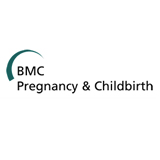
Abstract (provisional)
Background
Increasing the number of women birthing with skilled birth attendants (SBAs) as one of the strategies to reduce maternal mortality and morbidity must be partnered with a minimum standard of care. This manuscript describes the quality of intrapartum care provided by SBAs in Mae La camp, a low resource, protracted refugee context on the Thai-Myanmar border.
Methods
In the obstetric department of Shoklo Malaria Research Unit (SMRU) the standardized WHO Safe Motherhood Needs Assessment tool was adapted to the setting and used: to assess the facility; interview SBAs; collect data from maternal records during a one year period (August 2007 – 2008); and observe practice during labour and childbirth.
Results
The facility assessment recorded no `out of stock’ or `out of date? drugs and supplies, equipment was in operating order and necessary infrastructure e.g. a stand-by emergency car, was present. Syphilis testing was not available. SBA interviews established that danger signs and symptoms were recognized except for sepsis and endometritis. All SBAs acknowledged receiving theoretical and `hands-on’ training and regularly attended deliveries. Scores for the essential elements of antenatal care from maternal records were high (>90%) e.g. providing supplements, recording risk factors as well as regular and correct partogram use. Observed good clinical practice included: presence of a support person; active management of third stage; post-partum monitoring; and immediate and correct neonatal care. Observed incorrect practice included: improper controlled cord traction; inadequate hand washing; an episiotomy rate in nulliparous women 49% (34/70) and low rates 30% (6/20) of newborn monitoring in the first hours following birth. Overall observed complications during labour and birth were low with post-partum haemorrhage being the most common in which case the SBAs followed the protocol but were slow to recognize severity and take action.
Conclusions
In the clinic of SMRU in Mae La refugee camp, SBAs were able to comply with evidence-based guidelines but support to improve quality of care in specific areas is required. The structure of the WHO Safe Motherhood Needs Assessment allowed significant insights into the quality of intrapartum care particularly through direct observation, identifying a clear pathway for quality improvement.